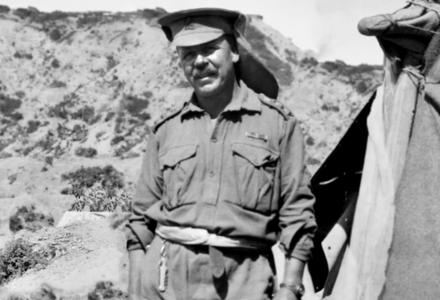After the returned from war, Private Charles Byrne settled on a wheat farm in Gunnedah. Something of a larrikin, the Gallipoli veteran renamed his property ‘Bugralong’. Like thousands of other soldier settlers, Byrne had been promised ‘land fit for heroes’. But the reality proved very different: ‘I have 90 acres ploughed & with wheat. It is up and no fence. It is at the mercy of rabbits and sheep. I have no money. It has been drought ever since my advent here and I am £300 to the bad in the last 4 months… it breaks a man’s heart to see his wheat destroyed.’
Byrne pleaded with the NSW Lands Department to devote some of his soldier settlement loan to raising fencing. Weakened by his war injuries, that job was ‘impossible’ to manage on his own. But the minister refused to grant any concessions to a man described as a ‘ persistent complainant’. Byrne, the Minister for Lands W.E. Wearne concluded, was a troublemaker, inclined to ‘trade on his war service’: ‘although I am perfectly aware the great service rendered to the Empire by the true blue Digger, I want each soldier to realize he still owes something to his country and his manhood’.
It is hard to say what exactly Charlie Byrne still owed his country. Byrne enlisted with the 6th Australian Light Horse in 1914 and was wounded within weeks of landing at Gallipoli. His medical reports suggest something of what he went through: ‘a shell burst on top of me, just picked me up and bashed me down. The others with me were either killed or wounded. There was little known of shellshock or anything like that and no-one was game to go on sick parade unless he had his guts hanging out. His mates saw to that, for no man like the appellation of a malingerer’. In August 1915, Byrne was evacuated off the peninsula ‘ rotten with rheumatism’, plagued by ‘maddening headaches’ and with his nerves shot to pieces. He never recovered, was discharged as medically unfit and sent home to Australia. The man described as a ‘persistent complainant’ refused the offer of a pension. He had worked the land all his life and was keen to return to it.
Byrne’s war injuries worsened at around same pace as the value of his property declined. By the 1930s the doctors described him as ‘highly neurotic’, afflicted by sleeplessness, heart trouble, ‘pains in hips, shoulders and elbows’, and ‘shortness of breath’. The ex-soldier was deemed ‘ incapable of doing any solid or continuous work’ and was recommended again for a pension. But by that time, as Byrne’s tersely put it, ‘my block “Bugralong” has gone Bug-herd and me along with it’. Drought, debt, disability and an inflexible bureaucracy had forced him off his land. Byrne described his life on a soldier settlement block as ‘ living on a precipice’. ‘ War, sickness, accidents and debts is not a very good diet with which to face the world’.
Even so, it would be wrong to see Charlie Byrne—or thousands of other failed soldier settler’s like him—simply as victims. When Byrne walked off his property in 1932, he’d not paid not a penny of the £625 loan originally granted by the Crown. The sheep, the only thing of value on the place, were ‘stolen’ not long before Byrne abandoned the holding. Some, coincidentally, were auctioned off by his brother, also a veteran, and a man who lost a leg in the war. In 1932, a final memo from the Department recommended ‘Charles Bryne be requested to call at Head Office and explain the discrepancy or account for the lost or missing sheep’. He never did.
Byrne’s story reminds us that Australia’s single most ambitious scheme for post war reconstruction—soldier settlement—was for many a monumental failure. Drought, illness, bad markets, inexperience and poor management forced thousands of their land. By the 1930s, barely half the men who took up land remained on their original holdings. And many, like Byrne, quit their properties in debt.
For full attribution of sources, suggestions for further reading and an extended version of the story itself see ‘He still owes something to his country and his manhood: Charles Byrne’ in Bruce Scates, Rebecca Wheatley and Laura James, World War One: A History in 100 stories (Melbourne, Penguin/Viking, 2015) pp. 133--135; 357.



